6 June 2002
On the morning of our journey into Purnululu National Park, we all woke up in the dark. The kids ate breakfast; I threw down a few coffees and furiously packed what I could into the trailer and secured it. We were out the front of the roadhouse at Turkey Creek by 5.20 a.m. sharp.
Our driver, Tony, was a gregarious fellow who made the ride very enjoyable. We travelled with a German couple. I chatted to the bloke and tried to disabuse him of some jaded views he had developed about the Aboriginal presence in the towns, and encouraged him to visit the Warmun Art Gallery to see something of the cultural revival.
We picked up a few stray travellers at the turnoff to a cattle station, and set out along the Spring Creek Road to the Bungles. This was a rough track that wove its way through what Tony accurately described as scrappy cattle country, along corrugated ruts, and over picturesque creek crossings, both wet and dry.
We gradually moved out of cattle country into the Purnululu National Park, where the native grasses grew tall, and the understorey of scrub had grown back.
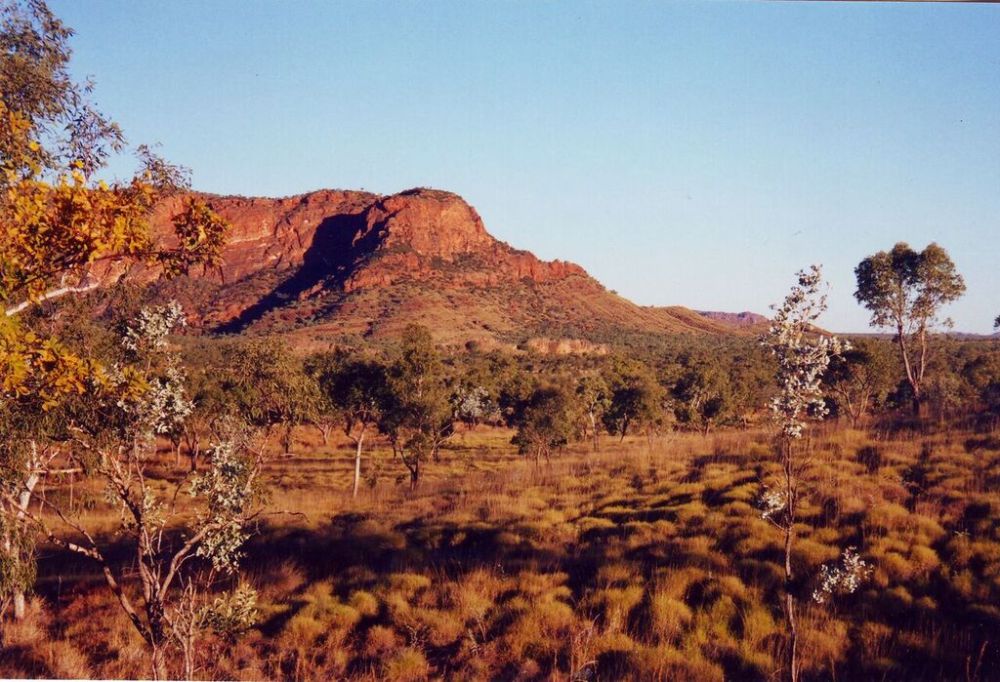
We had to make several creek crossings. It took several attempts to ascend out of one of these, but he vast 4WD van was seemingly unstoppable. We stopped for morning tea and a pee in a pretty little spot near a creek.

After some hours of bumping along, we arrived at the visitor’s information centre where we prepaid for some cloth badges, which the staff promised to post to us (but never did), and we downed some cold soft drinks. Our driver, Tony, then handed us over to Robert, our tour guide. We changed transport from the Oka to a four-wheel drive bus, and commenced the first leg of our tour of the Bungles.
On the first day we covered three main attractions: Mini Palms, Echidna Chasm, and the Western Wall. On the bus trip there the guide recounted how the park came into being. He also described the local geology and provided some statistics about the increasing number of visitors and the size of the massif and surrounding area.
The walk to Mini Palms was a few kilometres up a dry creek bed strewn with pebbles. As we made our way through a pleasant shady grove of Livingstonia palms, the guide described the various changes in seasons, wet to dry, and gave us an outline of the natural history of the area.
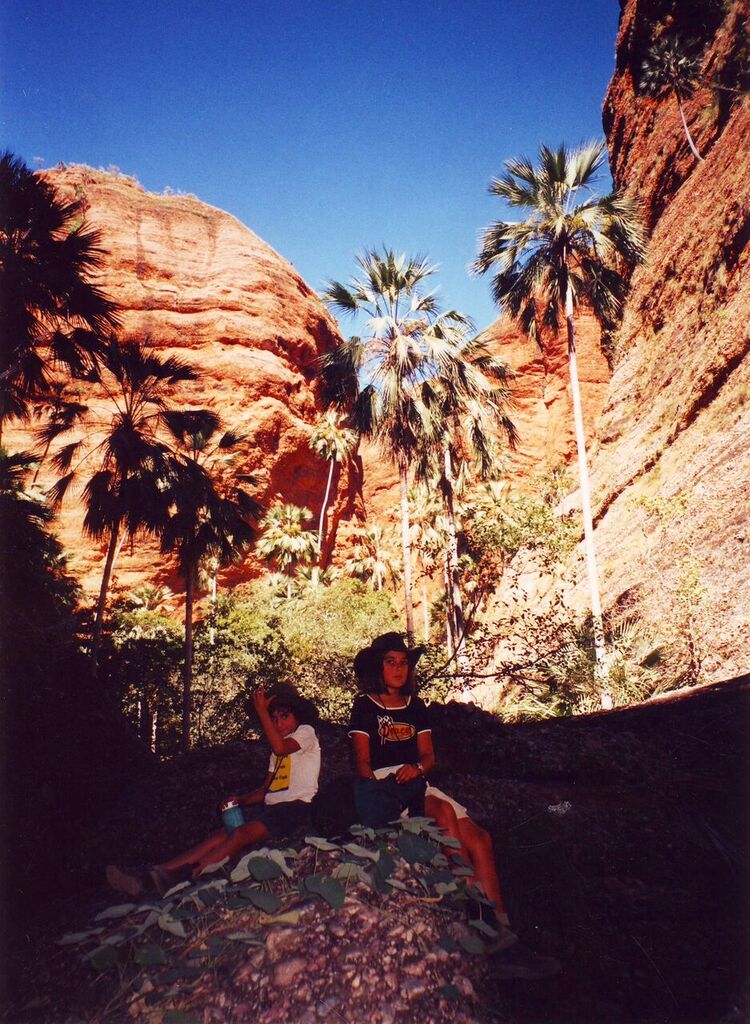
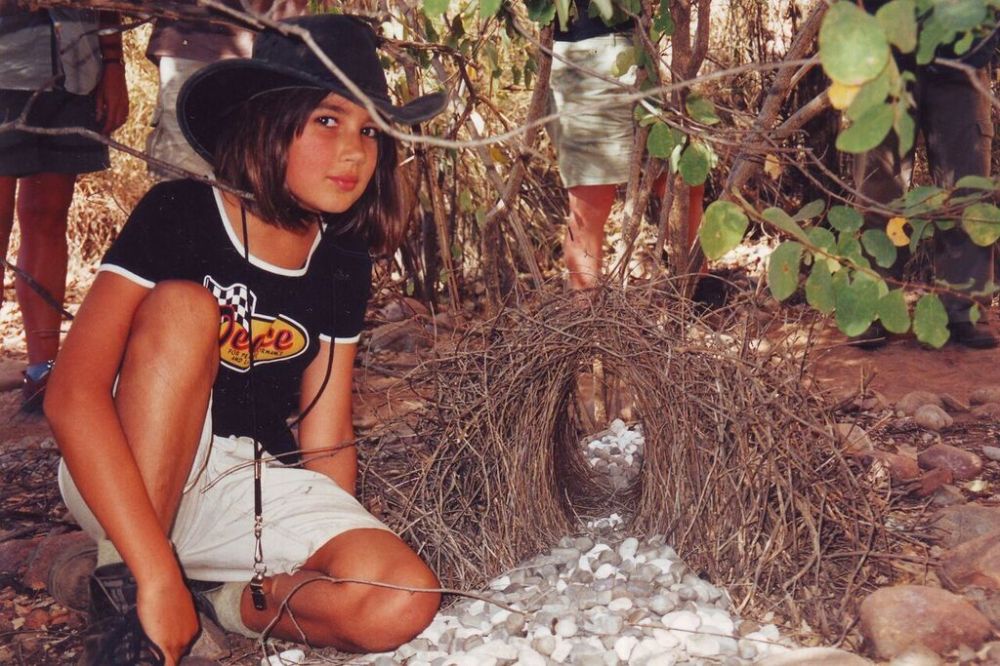
After we had rested for a while in the shade of the palm grove, we set back along the creek bed to the bus and drove a short distance to Echidna Chasm. This was a truly stunning sight – a gorge that narrowed into a deep chasm in the massif. It was cool and pleasant and dry inside, and the upper walls were bathed in a warm orange glow of reflected afternoon light.
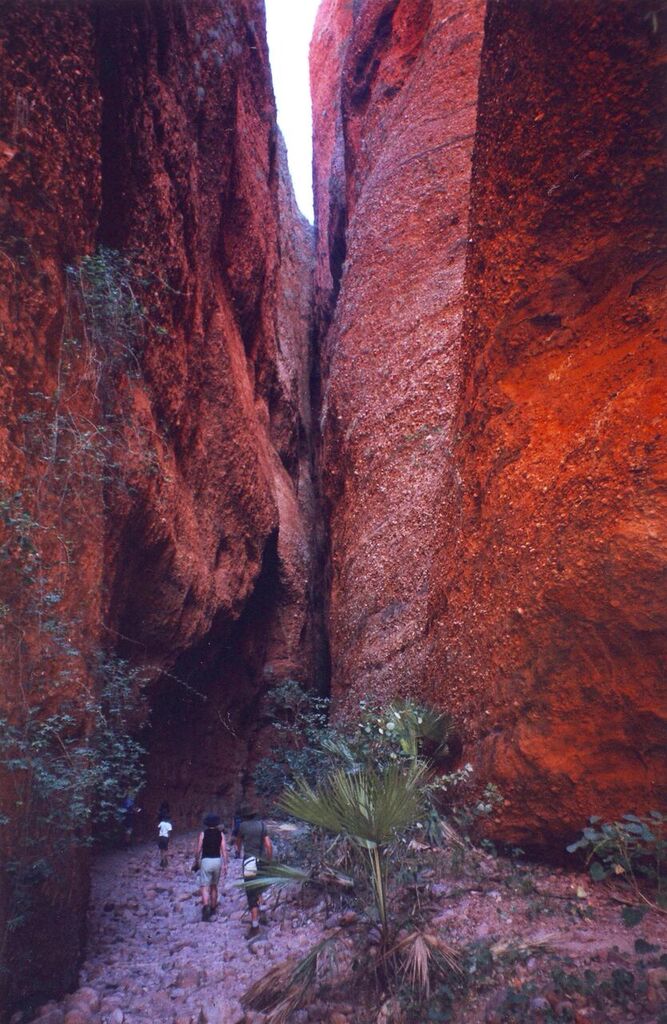
We stopped for a pleasant cold lunch between the first two sites. The inner-most chamber of the chasm was almost mystical. Ruby saw a snake (possibly a rock python) slithering up the wall as she hid in a rock crevice. This spot was Ruby’s favourite of the safari.


After enjoying Echidna Chasm at leisure, we returned to the bus and drove around to the western wall to watch the sunset. We had afternoon tea up on a hill with the sunset on our Western side, and the wall to the East. For an hour we chatted, sipped beverages, and watched the massif turn different hues of orange and scarlet. It was such a feast for the eyes that it was hard to know which way to look.
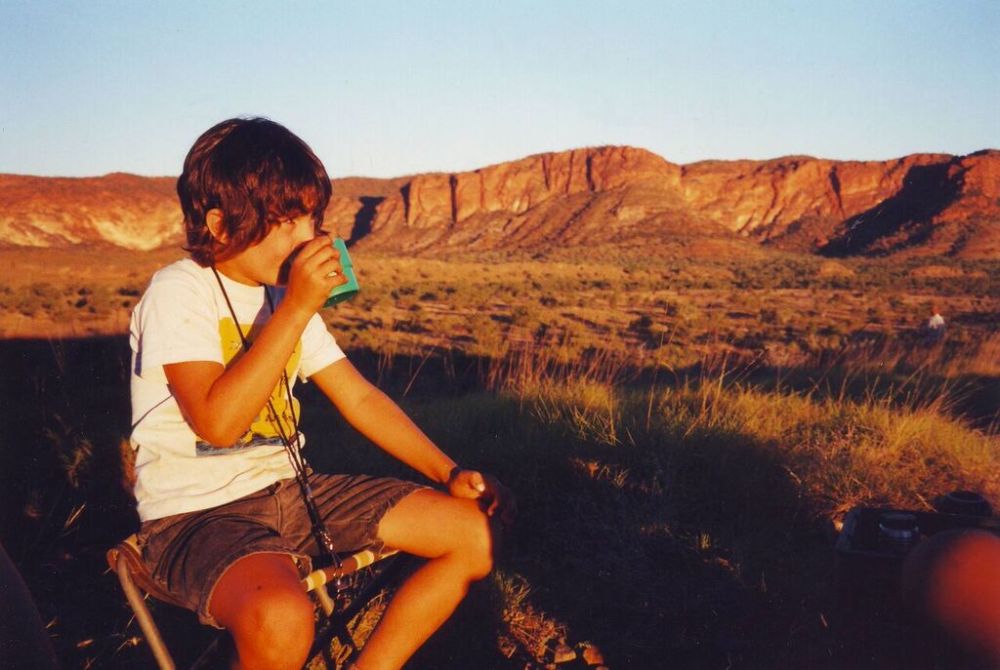
We learned at this point that the people who worked on the camping ground, and who conducted the tours, were less than happy with their working conditions. Our tour guide had to provide his own accommodation in the form of a tent; their days were impossibly long, and scheduled days off didn’t always occur when they were supposed to. He didn’t complain openly, but was clearly reluctant to provide answers to certain questions. When Susie and I pressed him, his discontent soon became evident. It seems the problem has to do with chronic understaffing and vaguely specified work conditions, which works to the employer’s advantage.
After watching the sunset, we returned to the campground and showered and enjoyed a few beers around a large open fire while the staff slaved away in the kitchen. It was nice not having to cook dinner for once, but I didn’t feel very comfortable about it in the circumstances. The food was pretty ordinary, but adequate in quantity. The kids went off to bed and Susie and I sat up chatting with a couple of other campers, and an Aboriginal tour guide from Wyndham called Craig. We shared our bourbon supply around, and went off to bed when the generator was switched off at 9.20 p.m.
The sleeping quarters were comfortable enough, consisting of small two-person tents on a solid base raised up off the ground. They were mozzie-proof and well ventilated, and each contained two small cots, with linen provided.